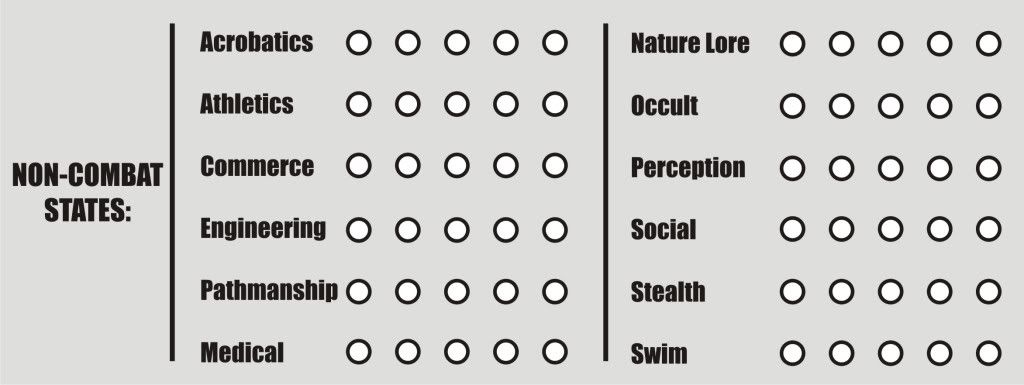Combat in JEP1 is very much influenced by 2 systems: the D6 Fighting Fantasy game books, RISK board game & the Warhammer fantasy combat system.
Melee Combat in this system is fought this way:
INITIATIVE PHASE: Both combatants roll a d6 + their initiative score. The highest goes 1st. A tie would result in a roll over until some one goes first. This only applies to the 1t round of combat, on further rounds after the 1st, use the base score of both combatants to see who goes first: the one with the higher score will go first for the rest of the round. If there is a tie, roll off & keep this score for the rest of the combat rounds.
MOVEMENT: Attacker may move 4 squares before his melee attack. A melee attack can only be initiated if the attacker is adjacent to the defender .
PRE-HIT SKILLS: The attacker may use a “skill” before rolling his attacks. After the attacker declares his “skills”, the defender may use a “skill” before the attacker rolls attacks. A maximum of 2 skills can be used in this phase for both attacker & defender.
ROLL TO HIT:
- Attacker rolls 1d6 for each score written at his melee; example: if the score is M2, then attacker rolls 2d6 as attacks.
- Defender rolls 1d6 for each score written at his melee; example: if the score is M2, then defender rolls 2d6 as defense.
- Attacker adds the d6 value to each of his melee score & add up the total; example: if attacker has a melee of 2 & he rolled a 4 & a 3, that means his attack value is a 6 & a 5.
- Defender adds the d6 value to each of his melee score & add up the total; example: if defender has a melee of 2 & he rolled a 4 & a 1, that means his defense value is a 6 & a 3.
- Defender then chooses how the defense dice goes. If the attacker’s attack value is higher or equal to the defense value of the defender. Then a “hit” is scored; example: Attacker has a attack value of 6 & 5, defender has a defense value of 6 & 3. Defender chooses to use his defense 6 to “block” the attacker’s attack 6. But since attacker has another attack value of 5 which is bigger then the defender’s next defense score of 3, a hit is scored!

PRE-DAMAGE SKILLS: The attacker may use a “skill” before rolling his damage. After the attacker declares his “skills”, the defender may use a “skill” before the attacker rolls damage. A maximum of 2 skills can be used in this phase for both attacker & defender.
ROLL To Damage:
- Attacker rolls 1d6 for “hit” made; example: Attacker scores 1 hit, so he rolls 1d6.
- Attacker adds the dice value & his strength score; example: Attacker rolls a d6 & gets a 4, he has a strength of 2. So his “damage” score is 6.
- Compare the damage score to the defender’s toughness score. If the value is higher or equal, then 1 damage is scored.
ARMOR BUFFER:
For each damage that has gone through the toughness, minus 1 damage for each armor value defender has. Example, attacker scores 1 damage, if defender has a armor value of 1 as well then no damage is taken. If attacker has scored 2 damage & defender only has armor value of 1, then a wound is scored.
COUNT WOUNDS:
For each wound scored, defender loses 1 health. If the defender has a health of 0. The defender is dead.
PASS PRIORITY:
If defender is alive, the priority is passed & the current defender is the new attacker, the current attacker becomes the new defender. Once the new defender & attacker reached the next “Count Wounds” phase, a round is done.
- For range attack, the system is generally the same with the exception of attacker uses his range to roll number of attack & defender uses initiative to roll for defense value.
- Attacker uses the weapons strength value to determine if he scores a damage against the defender’s toughness.
- Attacker need not be adjacent to defender as long as his range weapon can reach the defender.
That’s all for now. :)
* pictures are borrowed from googles, just so this post dont look too empty bah. XD








